How to Get Lean Mass Body
Top 10 Muscle Gaining Tips
Written By R. Dey I Updated on March 24, 2024
Do you dread spending countless hours in the gym, only to see your body become bulky and heavy, instead of lean and light? It's time to shatter the chains of disappointment and discover the ultimate tips that truly deliver results. In this captivating blog post, we will try to find out the answer of the question ‘How to Gain Lean Muscle Body’. Yes, we will unveil the secrets to getting lean instead of bulky, empowering you to unlock your full potential. Say goodbye to frustration and welcome a body that reflects your aspirations. Join us as we embark on a trans formative journey, exploring ten powerful tips that revolutionise your fitness journey. Brace yourself for a path that leads to a leaner, fitter, and more confident version of yourself, no matter whether you are bulky or not. So, let’s dive into the world of fitness and discover the secrets of ‘How to Get Lean Mass Body’ and achieve the body of your dreams.
TIPS
How to Get Lean Mass Body:Detailed Explanation of 10 Simple Muscle Building Tips for Better Understanding
We have tried to cover




1.
Body Composition
Body Fat Percentage
Optimal Body Fat Ratio for a Sculpted Physique
Muscle Mass
Ideal Muscle Mass
Overall Weight
Body Measurements
BMI (Body Mass Index)
Ideal BMI for a Lean Body
Waist-to-Hip Ratio
Optimal Waist-to-Hip Ratio for a Sculpted Physique
Body Shape
2.
Nutrients Impact Factor
Determine Your Caloric Needs
Prioritize Lean Protein
Embrace Complex Carbohydrates
Include Healthy Fats
Control Portion Sizes
Fill Up on Fiber
Minimize Processed Foods
Eat Mindfully
Plan and Prepare Meals
3.
Strength Training
Compound Exercises
Moderate Weights, Higher Repetitions
Super sets and Circuits
Incorporate Functional Movements
Focus on Form and Technique
Progressive Overload
Rest and Recovery
Warm-up and Cool-down
Listen to Your Body
Stay Consistent
4.
High Intensity Interval Training workouts
Tabata
Sprint Intervals
Circuit Training
EMOM (Every Minute on the Minute)
AMRAP (As Many Rounds as Possible)
Cardio HIIT
5.
Add Cardiovascular Workout
Running/Jogging
Cycling
Swimming
Jumping Rope
High-Impact Aerobics
6.
Principle of Rest and Recovery
Importance of rest
Take regular breaks
Incorporate active recovery
Rest days for physical activity
Manage stress
7.
Prioritizing Sleep
Muscle Repair and Growth
Fat Loss Facilitation
Optimal Hormonal Balance
Energy Restoration
How should I sleep to gain muscle
8.
Be Hydrated time to time
Does Drinking Water Make Muscle
How Much Water Should I Drink for Muscle Gain
Quench the Thirst, Fuel the Body
Sip Away Hunger
Power Up Your Workouts
Flush Out Toxins
The Required Quantity of Water
How Much Water for Workout
9. Track Fitness: Effective Workouts and Muscle Growth Milestones
Tracking Muscle Nutrition
Workout Strategy Tracking
Bulking and Cutting Phases Tracking
Nutrient Timing Tracking
Common Mistakes Tracking
Targeted Training Tracking
Supplements Tracking
Balanced Meal Tracking
Powerful Workouts Tracking
Muscle Growth Tracking
Nutrition Intake Tracking
Workout Effectiveness Tracking
Energy Level Monitoring
Body Transformation Progress
Rest Period Monitoring
Set Clear Goals
Keep a Journal
Take Progress Photos
Celebrate Milestones
10. Stay Consistent and Believe in Yourself
Define Your Why
Establish Realistic Goals
Create a Sustainable Routine
Embrace the Ups and Downs
Cultivate a Positive Mindset
1.
Body Composition
Together, let's unravel the mysteries and find the answers one by one ...
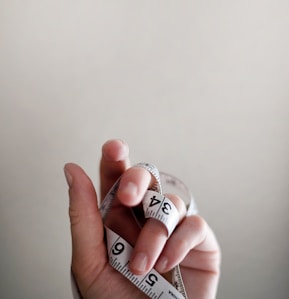

To embark on our journey towards achieving a lean body, it is vital to gain a deep understanding of our body composition. Recognising and comprehending our body composition is the fundamental cornerstone in our pursuit of a lean physique. When assessing body composition, there are several key factors that demand our attention and consideration.
Body Fat Percentage
This represents the proportion of your body weight that is made up of fat. It is a critical factor to determine when aiming for a lean body. Higher body fat percentages can indicate a need for fat loss to reveal those lean muscles.
Optimal Body Fat Ratio for a Sculpted Physique
The optimal body fat ratio for a sculpted physique can change based on various factors such as sex, age, and personal aims. Generally, for males, a body fat percentage below 10-12% is considered lean, while for females, a body fat percentage below 20-22% is often considered lean. However, it's important to note that these numbers are approximate and can vary based on personal preferences and individual body composition.
Muscle Mass
Muscle mass is the measure of muscle tissue in your body. It is essential to build and keep lean muscle for a sculpted physique. Raising muscle mass can help increase metabolism and enhance a slimmer look.
Ideal Muscle Mass for a Lean Body
For men, a lean body typically involves having a relatively higher amount of muscle mass compared to body fat. This can vary, but a rough estimate is around 10-20% body fat with a moderate to high level of muscle mass.
For women, a lean body often involves a lower body fat percentage and a well-defined, toned physique. Again, this can vary, but a rough estimate is around 18-28% body fat with a moderate level of muscle mass.
It's important to note that ideal muscle mass can vary significantly based on personal preferences, individual body composition, Height, Body Type and specific fitness goals. It's advisable to consult with a healthcare or fitness professional who can provide personalised guidance based on your specific needs and goals.
Overall Weight
While weight alone does not provide a comprehensive picture of body composition, it can be a useful indicator when considered in conjunction with other factors. Monitoring changes in weight can help track progress and adjust fitness and nutrition plans accordingly.
Body Measurements
Taking measurements of various body parts, such as waist, hips, thighs, and arms, can provide insights into changes in body composition. Tracking measurements over time can help assess fat loss and muscle gain in specific areas.
BMI (Body Mass Index)
It is not a direct measure of body composition, it can provide a rough estimate of whether your weight falls within a healthy range for your height. However, keep in mind that BMI does not differentiate between fat mass and muscle mass.
Ideal BMI for a Lean Body
For a lean body, a healthy BMI range is typically considered to be between 18.5 and 24.9. Keep in mind that this range is a general guideline and may not be suitable for everyone. BMI does not differentiate between Muscles mass and fat mass, so individuals with higher muscle mass may have a higher BMI but still have a lean and muscular physique.
Waist-to-Hip Ratio
It is a useful indicator of overall body fat distribution. A lower waist-to-hip ratio is often associated with a leaner physique and lower health risks.
Optimal Waist-to-Hip Ratio for a Sculpted Physique
The optimal WHR may differ based on sex and personal taste, but there are some common standards to follow. For men, a WHR lower than 0.90 is often regarded as attractive for a slim and fit body. This means that the waist circumference should be less than 90% of the hip circumference. However, it's important to note that WHR alone does not provide a complete picture of overall body composition or health.
For women, a WHR below 0.85 is often considered desirable for a lean and toned body. This means that the waist circumference should be less than 85% of the hip circumference. Similarly, it's essential to consider other factors such as body fat percentage, muscle mass, and overall body shape when aiming for a lean physique.
It's important to remember that individual body shapes and proportions can vary, and ideal ratios may differ based on personal preferences.
Body Shape
Understanding your body shape can give you an idea of how your body tends to distribute fat and muscle. Common body shapes include apple (carrying more weight around the midsection), pear (carrying more weight around the hips and thighs), and hourglass (having a balanced distribution of weight).
By considering these factors and regularly monitoring your body composition, you can better assess your progress, set realistic goals, and make adjustments to your fitness and nutrition plans. Remember, everyone's body composition is unique, so focus on your own journey and strive for progress rather than perfection.
2.
Nutrients Impact Factor




Achieving a lean physique requires a holistic approach, and nutrition undoubtedly takes center stage. Say goodbye to processed foods and welcome the nourishing embrace of whole foods, rich in nutrients. Mindful portion control becomes your ally, while tracking your calorie intake can help maintain a slight deficit for effective fat loss.
To delve deeper into the realm of nutrition for a lean physique, here are some unique tips to keep in mind as you embark on this trans formative journey.
Determine Your Caloric Needs
If you want to know how much energy your body needs every day, you have to consider various factors that affect your metabolism. Metabolism is the process by which your body converts food into fuel for your cells. The amount of fuel you need depends on your age, gender, height, weight, and activity level. These factors determine your basal metabolic rate (BMR), which is the number of calories you burn at rest. Your BMR accounts for about 60% to 75% of your total daily caloric needs.
To calculate your BMR, you can use different formulas depending on your gender. For men, the formula is:
BMR = (10 x your weight (in kg) + 6.25 x your height (in cm) - 5 x your age (years) + 5)
For women, the formula is:
BMR = 10 x weight (kg) + 6.25 x height (cm) - 5 x age (years) - 161
For example, if you are a 25-year-old woman who weighs 60 kg and is 165 cm tall, your BMR would be:
BMR = 10 x 60 + 6.25 x 165 - 5 x 25 - 161
BMR = 600 + 1031.25 - 125 - 161
BMR = 1345.25 calories
However, your BMR is not the only factor that determines your daily caloric needs. You also have to consider your physical activity level, which affects how much energy you expend during the day. To account for this, you can multiply your BMR by an activity factor that corresponds to your lifestyle.
If you are lightly active, you are like a car that drives slowly on a smooth road 1-3 days a week. You need to multiply your BMR by 1.375 to get your fuel needs.
If you are moderately active, you are like a car that drives at a moderate speed on a bumpy road 3-5 days a week. You need to multiply your BMR by 1.55 to get your fuel needs.
If you are very active, you are like a car that drives fast on a rough road 6-7 days a week. You need to multiply your BMR by 1.725 to get your fuel needs.
If you are extremely active, you are like a car that drives very fast on a rocky road and carries heavy loads every day. You need to multiply your BMR by 1.9 to get your fuel needs.
For example, if you are a moderately active woman with a BMR of 1345.25 calories, your daily caloric needs would be:
Daily caloric needs = BMR x activity factor
Daily caloric needs = 1345.25 x 1.55
Daily caloric needs = 2085.14 calories
This means that you need to consume about 2085 calories per day to maintain your current weight and energy level.
To make this calculation more fun and creative, you can imagine that your body is like a car that runs on fuel. Your BMR is like the engine size, which determines how much fuel you need to keep the car running at idle speed. Your activity level is like the driving speed, which affects how much fuel you burn while driving. Your daily caloric needs are like the fuel tank capacity, which tells you how much fuel you need to fill up the tank every day.
If you want to change your weight or body composition, you can adjust your fuel intake or output accordingly. If you want to lose weight, you can either consume less fuel than your tank capacity (create a calorie deficit) or burn more fuel than you consume (increase your physical activity). If you want to gain weight, you can either consume more fuel than your tank capacity (create a calorie surplus) or burn less fuel than you consume (decrease your physical activity). If you want to maintain your weight, you can balance your fuel intake and output so that they are equal.
Prioritize Lean Protein
To build and repair your muscles, you need protein in your diet Like chicken, turkey, fish, tofu, beans, and yogurt, they are your best bet They provide you with lean and quality protein, which is good for your health and fitness Try to eat around 0.8 to 1 gram of protein per pound of body weight, that’s more or less the ideal amount for your wellness.
Embrace Complex Carbohydrates
To nourish your body and mind, choose carbs that are complex and wholesome. They will give you energy, fiber, and nutrients. Some examples are grains that are whole, quinoa that is nutty, potatoes that are sweet, and rice that is brown. They provide sustained energy and essential nutrients while being lower in refined sugars and processed ingredients.
Include Healthy Fats
Add healthy fats to your daily diet like salmon, avocado, nuts, seeds, olive oil etc. Healthy fats support hormone production, enhance satiety, and aid in nutrient absorption.
Control Portion Sizes
Your portions are the secret to your calorie control They are like the locks that guard your goal If you eat too much or too little, you’ll lose the key So weigh and measure your food carefully.
Fill Up on Fiber
To feel full and satisfied, eat foods that are rich in fiber Like veggies, fruits, grains, and beans, they are like a natural wiper They clean your gut and fill your plate, making you eat less and feel great.
Minimize Processed Foods
To gain a lean mass body Limit your consumption of processed foods high in added sugars, unhealthy fats, and empty calories. Fill your plate with foods that are whole and rich in nutrients. They will offer you essential vitamins and minerals that your body needs.
Eat Mindfully
Enjoy every bite of your food by chewing it slowly and mindfully. Listen to your body and notice when you are hungry or full. This can help you avoid overeating and foster a healthier relationship with food.
Plan and Prepare Meals
Try to make your meals at home whenever possible. This allows you to have control over the ingredients and portions, making it easier to stick to your nutrition goals.
Remember, nutrition is a vital component of achieving a lean physique. Tailor your nutrition approach to your specific needs, consult a registered dietitian if needed, and stay consistent with healthy eating habits to support your fitness journey.
3.
Strength Training


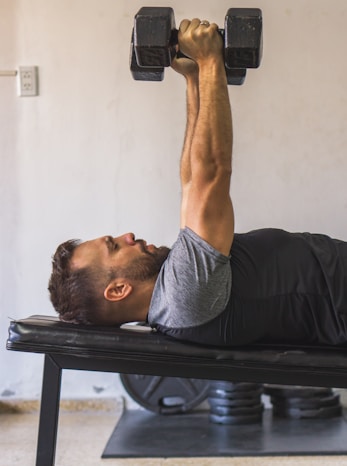

While building muscle is beneficial, it's important to adopt a strength training routine that focuses on muscle tone. Incorporate compound exercises such as squats, dead lifts, and bench presses into your routine, targeting specific muscle groups. Opt for moderate weights and higher repetitions to stimulate lean muscle growth. Get ready to embark on a strength training journey with a twist, building strength while sculpting your body to perfection. Here's a beginner's guide to kick start your transformation:
Compound Exercises
Incorporate compound exercises into your routine. These exercises engage multiple muscle groups simultaneously, maximising efficiency and calorie burn. Squats, dead-lifts, lunges, bench presses, and overhead presses are excellent examples of compound movements.
Moderate Weights, Higher Repetitions
Aim for moderate weights that challenge your muscles without sacrificing proper form. Instead of going for heavyweights and low repetitions, opt for moderate weights with higher repetitions. This approach promotes muscle endurance and definition, rather than sheer size.
Super sets and Circuits
Spice up your workouts with supersets and circuits. Alternate between two exercises with little to no rest in between to keep your heart rate up and maximize calorie burn. This technique also saves time, making it ideal for those with busy schedules
Incorporate Functional Movements
Functional movements mimic activities performed in daily life, making your training more practical and applicable to real-world scenarios. Include exercises like squats, lunges, planks, and push-ups to improve overall strength and movement patterns.
Focus on Form and Technique
Form and technique matter most to avoid pain and enhance effects. If you're new to strength training, consider working with a certified personal trainer or watching instructional videos to learn correct form for each exercise.
Progressive Overload
As you develop, intensify the pressure of your exercises.This can be done by adding more weight, increasing repetitions, or reducing rest periods between sets. Progressive overload ensures continued muscle growth and strength development.
Warm-up and Cool-down
Always warm up before starting your strength training session to increase blood flow to the muscles and reduce the risk of injury. Similarly, cool down with stretching exercises to improve flexibility and prevent muscle tightness.
Listen to Your Body
Notice how your body reacts and feels as you work out and rest. If you experience pain or discomfort, modify exercises or seek guidance from a professional. Your body's feedback is invaluable in ensuring safe and effective training.
Stay Consistent
For strength training progress, consistency rocks. Go for two or three sessions per week, raising the frequency as you become snug and mighty. Remain faithful, and the results will glow.
Remember, strength training with a twist is about creating a lean, strong, and functional physique. Embrace the journey, challenge yourself, and enjoy the process of becoming the best version of yourself. So, grab those weights, lift with confidence, and let your inner strength shine through!
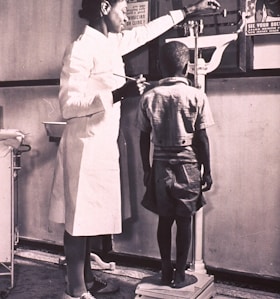

4.
High Intensity Interval Training workouts




HIIT workouts are a fantastic addition to your fitness regimen when aiming for a lean physique. These intense bursts of activity followed by short rest periods not only burn calories but also increase your metabolic rate, promoting fat loss. Include exercises like sprints, mountain climbers in your HIIT routine.
Are you looking for a workout routine that will help you burn calories, increase your fitness level, and boost your metabolism? HIIT is a popular and effective training method that involves alternating between short bursts of intense exercise and brief recovery periods.
HIIT is one of the definite answers to the question of ‘How to Have Lean Mass Body’, according to fitness experts. Let's dive into the various types of HIIT exercises you can incorporate into your fitness routine:
Tabata
Tabata is a form of high-intensity interval training that can boost your fitness and burn calories in a short time. It involves pushing yourself to the limit for 20 seconds, then taking a brief break for 10 seconds. Tabata can challenge your body and mind with any exercise you choose, from squats to sprints.
Sprint Intervals
Sprint intervals are a classic form of HIIT that involves alternating between short, all-out sprints and active recovery periods. Find a flat surface or a treadmill and sprint at maximum effort for 20 to 30 seconds, followed by a 30 to 60-second recovery period of walking or slow jogging. Repeat this cycle for several rounds.
Circuit Training
Perform each exercise for a set period (e.g., 30 seconds) with little to no rest in between. Once you complete all the exercises, take a short rest and repeat the circuit. This type of HIIT allows you to target different muscle groups while keeping your heart rate elevated.
EMOM (Every Minute on the Minute)
EMOM workouts involve performing a specific exercise or set of exercises within a minute, aiming to complete them as quickly as possible. Once you finish, rest for the remainder of the minute. At the start of the next minute, begin the next set of exercises. This format challenges both strength and cardiovascular endurance.
AMRAP (As Many Rounds as Possible)
AMRAP workouts involve completing as many rounds of a designated set of exercises as possible within a specific time frame, typically ranging from 10 to 20 minutes. Perform each exercise back-to-back without rest and record the number of rounds completed. AM RAP workouts are intense and time-efficient.
Cardio HIIT
Incorporate cardiovascular exercises like jumping jacks, burpees, mountain climbers, high knees, or jumping rope into your HIIT routine. Alternate between 30 to 60 seconds of intense effort and 10 to 30 seconds of rest.
Remember, the key to HIIT is pushing yourself to your maximum effort during the high-intensity intervals and allowing your body to recover during the rest periods. HIIT workouts can be tailored to your fitness level, so beginners can start with shorter intervals and gradually increase the intensity and duration as they progress.
Embracing High-Intensity Interval Training (HIIT) will add excitement and intensity to your fitness journey. Incorporate these various forms of HIIT into your routine and experience the benefits of improved cardiovascular fitness, increased calorie burn, and enhanced metabolic rate. Get ready to challenge yourself, push your limits, and achieve your fitness goals with HIIT!
5.
Add Cardiovascular Workout




Cardiovascular exercise helps in shedding excess body fat, revealing those lean muscles underneath. Engage in activities like running, cycling, swimming, or dancing to get your heart pumping and boost calorie burn.Cardio is key for a healthy heart. Moderate your pace, not your passion. Make it 150 minutes, or more, every week.
Cardiovascular exercise, also known as cardio or aerobic exercise, is a vital component of any well-rounded fitness routine. It not only helps in shedding excess body fat but also strengthens your heart, improves lung capacity, and boosts overall endurance. Cardiovascular training is a vital part of any fitness regimen. It improves your heart health, boosts your metabolism, and enhances your endurance. But what are the different types of cardiovascular training, and how can they benefit you? Let’s discuss.
Running/Jogging
Running or jogging is a popular cardiovascular exercise that can be done indoors on a treadmill or outdoors. Running at a moderate intensity can burn an impressive amount of calories, helping you achieve your weight loss goals. Aim for at least 150 minutes of running or jogging per week, gradually increasing the duration and intensity as your fitness level improves.
Cycling
Whether you prefer outdoor cycling or indoor stationary biking, cycling is an excellent cardiovascular exercise that works your lower body muscles while providing a great cardio workout. Cycling at a moderate to vigorous intensity can burn a significant amount of calories and strengthen your leg muscles. Aim for at least 150 minutes of cycling per week or incorporate it into your daily commute to reap the benefits.
Swimming
It engages multiple muscle groups simultaneously, providing an excellent aerobic workout. Depending on your swimming technique and intensity, you can burn a substantial amount of calories while enjoying the refreshing water. Aim for at least 150 minutes of swimming per week, focusing on different strokes to work various muscle groups.
Jumping Rope
Jumping rope is a simple yet highly effective cardiovascular exercise that requires minimal equipment. It elevates your heart rate quickly and engages your entire body, including your arms, legs, and core. Jumping rope at a moderate to high intensity for 20 to 30 minutes can burn a significant number of calories. So add jumping rope into your daily workout routine .
High-Impact Aerobics
High-impact aerobics involves continuous movements that incorporate jumping, hopping, and dynamic exercises. It combines cardio and strength training, offering a challenging and effective workout. High-impact aerobic classes or home workouts can help improve cardiovascular fitness, coordination, and overall body strength. Start with 20 to 30 minutes of high-impact aerobics, gradually increasing the duration and intensity.
Remember to choose cardiovascular exercises that you enjoy and that align with your fitness level and any physical limitations. A healthy heart needs some work every week. Try to get at least 150 minutes of exercise at a moderate pace or 75 minutes at a fast pace. Additionally, don't forget to warm up before starting your cardio session and cool down afterword to prevent injuries and aid in recovery.
Incorporating cardiovascular exercise into your fitness routine will not only help you achieve a lean physique but also improve your overall health and well-being. So, whether you prefer running, cycling, swimming, jumping rope, or high-impact aerobics, find the cardio exercises that suit you best and get ready to elevate your fitness journey to new heights!
6.
Principle of Rest and Recovery




Picture this: I was on a mission, fueled by passion and determination, to achieve my fitness goals. I pushed myself relentlessly, thinking that the more I trained, the faster I would see results. Oh, how wrong I was! Instead of gaining strength and endurance, my body started sending distress signals. It rebelled against me, whispering in painful reminders that I had crossed its limits.
It took me a while to realise that rest was not a sign of weakness, but a badge of honour that my body was longing for. I decided to embark on a journey of self-discovery, learning to listen to the subtle whispers of my own physical and mental well-being.
I began to incorporate rest days into my training schedule, giving my muscles a chance to recover and repair. And you know what? It made all the difference. I discovered that a well-rested body is like a finely tuned instrument, ready to perform at its peak. The progress I made during those restful moments far outweighed any temporary gains I may have sacrificed.
Remember, it's not about how hard you can push yourself, but how well you can take care of yourself. Trust me when I say that a well-rested body is a force to be reckoned with. So, go forth, my friends, and let rest and recovery be your guiding light on this remarkable fitness adventure.
Importance of rest
Rest is indeed essential for our physical, mental, and emotional health. It rejuvenates us, allowing us to recharge and face the world with renewed vigor. It allows our bodies to repair and rejuvenate, while our minds relax and recharge. Without adequate rest, we become more susceptible to stress, fatigue, and burnout.
Take regular breaks
Throughout the day, take short breaks from work or any mentally demanding tasks. Engage in activities that help you relax and recharge, such as taking a walk, practising deep breathing, or listening to calming music. These breaks can enhance productivity and prevent mental fatigue.
Incorporate active recovery
Active recovery involves engaging in light exercises or activities that promote blood circulation and muscle relaxation. Examples include yoga, stretching, or going for a leisurely swim. Active recovery helps reduce muscle soreness, improves flexibility, and enhances overall recovery.
Rest days for physical activity
If you engage in regular exercise or intense physical training, schedule rest days to allow your body to recover. Rest days help prevent injuries, muscle strains, and over training.
Manage stress
Chronic stress can hinder proper rest and recovery. Find healthy outlets to release stress and create a balanced lifestyle.
Remember, rest and recovery are not signs of weakness but rather essential components of a healthy and productive life. By prioritising rest, you can enhance your overall well-being, improve performance, and prevent burnout.
7.
Prioritizing Sleep




In the pursuit of fitness, we often emphasize workouts and diet. But what if I told you there's something else equally important? Prioritize sleep than any other activity when it comes to achieving a lean body mass. Yes, you heard it right! Prioritize sleep than spending endless hours in the gym. It's during sleep that our body recovers and builds muscles, facilitating the journey of how to get lean body mass. So, let's prioritize sleep than overlooking its importance, and let's embrace a holistic approach to fitness!
When it comes to reaching your fitness goals, sleep isn't just a luxury but a necessity. Strive for 7-9 hours of uninterrupted, high-quality sleep each night, and witness the incredible benefits it brings to your journey. Let's delve into the specifics and uncover how sleep fuels muscle growth and aids in shedding fat.
In the journey of fitness, we often overlook the power of sleep. Prioritize sleep to rejuvenate your body and mind, paving the way for a healthier tomorrow. Remember, it’s not just about gaining lean body mass, it’s about overall wellness. So, let’s prioritize sleep, let’s prioritize fitness!
Muscle Repair and Growth
While you slumber, your body undergoes a remarkable process of muscle repair. Sleep acts as a recovery period, allowing your muscles to heal from the stress and micro-tears caused by workouts. During this crucial downtime, growth hormone production peaks, facilitating muscle development and strength gain.
Fat Loss Facilitation
Believe it or not, sleep plays a significant role in your body's ability to shed excess fat. When you get enough sleep, these hormones are balanced, reducing cravings and preventing overeating. This, in turn, supports your fat loss efforts.
Embarking on the path of fitness, we often focus on workouts and diet, but let's not forget to prioritize sleep. Sleep is the unsung hero in facilitating fat loss and helping us gain toned muscle. It's not just about how to get toned muscle, it's about embracing a holistic approach to fitness. Without optimum sleep you cannot have toned muscle. To understand that what a toned muscle is , you may explore the article- What is Toned Muscle: Meaning & Your 1st Dive into Fitness.
Optimal Hormonal Balance
Sleep is a key player in maintaining the delicate balance of hormones that influence muscle growth. It boosts testosterone production, a crucial hormone for muscle protein synthesis and building lean muscle mass. Simultaneously, it keeps cortisol levels in check, preventing muscle breakdown and promoting a favorable anabolic environment.
Energy Restoration
Sleep serves as a vital energy refresher. While you snooze, your body restores glycogen stores in your muscles and liver. This ensures you wake up with a renewed energy reserve, ready to tackle intense workouts and maximize your performance. With ample energy at your disposal, you can push yourself further, stimulating muscle growth and enhancing overall fitness.
Don't underestimate the power of a good night's sleep in your fitness journey. Prioritize getting 7-9 hours of quality sleep to unlock the full potential of your workouts. Let sleep become your secret weapon for muscle repair, growth, fat loss, and hormonal balance. Embrace the restorative power of sleep and witness the transformative impact it has on your pursuit of a fitter, healthier you.
How Should I Sleep to Gain Muscle
This question is so common and vast that I will delve deeper into its various aspects and implications. If you want to build muscle, you need to do more than just effective workouts. You also need to get quality sleep and enough of it, here I will explain how sleep affects muscle growth and give you some tips on how to optimize your sleep for better results.
Sleep and Muscle Growth
The Science Behind It
Sleep is essential for muscle recovery and development. When you sleep, your body releases growth hormones that help repair the micro-tears in your muscle fibers caused by strength training. These hormones also stimulate protein synthesis, which is the process of creating new muscle tissue. Studies show that most of the growth hormone is released during deep sleep, also known as REM sleep 12.
Sleep also helps prevent muscle breakdown and promote fat loss. When you are sleep deprived, your body produces more cortisol, a stress hormone that can increase protein breakdown and fat storage 3. On the other hand, when you get enough sleep, your body can maintain a positive nitrogen balance, which means that you have more protein available for muscle growth 4.
How Much Sleep Do You Need for Muscle Growth -
The average adult needs about 7 to 9 hours of sleep per night, but this may vary depending on your individual needs and lifestyle. If you are working out regularly and want to maximize your muscle gains, you may need more sleep than someone who is sedentary or less active. Some factors that can affect your sleep needs are:
Your age
As you get older, your sleep quality and quantity tend to decline. You may need to adjust your bedtime and wake-up time accordingly.
Your training intensity and frequency
The more intense and frequent your workouts are, the more recovery time you need. You may need to increase your sleep duration or take naps during the day to compensate.
Your diet and hydration
What you eat and drink can affect your sleep quality and quantity. You should avoid caffeine, alcohol, and spicy foods before bed, as they can interfere with your sleep cycle. You should also drink enough water throughout the day to prevent dehydration, which can cause fatigue and poor sleep.
Your stress level
Stress can disrupt your sleep by making it harder to fall asleep or causing you to wake up during the night. You should try to manage your stress by practicing relaxation techniques, such as meditation, breathing exercises, or yoga.
How to Get Better Sleep for Muscle Growth
Here are some best tips to gain muscle by improving your sleep quality and quantity:
Stick to a Stable Sleep Rhythm
You should prepare yourself to go to the bed maintaining the same time. This will help your body establish a natural rhythm and make it easier to fall asleep and stay asleep.
You can also use pillows, mattresses, sheets, and blankets that suit your preferences and needs.
Avoid screens before bed
The blue light emitted by electronic devices, such as TVs, computers, smartphones, or tablets, can suppress the production of melatonin, a hormone that regulates your sleep cycle. So avoid it at least an hour before bed.
Have a relaxing bedtime routine
Doing something relaxing before bed can help you unwind and prepare for sleep. You can read a book, listen to soothing music, take a warm bath, or do some gentle stretches. Avoid any stimulating or stressful activities, such as work, games, or arguments.
Exercise not very close to bedtime
Exercising too close to bedtime can make you too alert or energized to fall asleep. You should aim to finish your workouts at least three hours before the bed or do them earlier in the day.
List of Some Frequently Asked Question (FAQ)
What is a Lean Muscle Body Type
How Much Weight is Good for Lean
How Many Days Do I Need to Get a Lean Body
How Much Protein Per Day for Lean
What Body Percentage is Lean


8.
Stay Hydrated time to time




In the quest for a lean and healthy body, we often focus on diet and exercise, but one crucial element is often overlooked: hydration. Staying adequately hydrated is not only essential for overall well-being but also plays a significant role in achieving your fitness goals. Let's dive into the importance of hydration and how it can propel you towards a leaner, fitter you.
Water, the lifeblood of our bodies, plays an important role in muscle development. Biologically, it acts as a catalyst for biochemical reactions, facilitating protein synthesis - the scientific way to muscle growth. Clinically, proper hydration is linked to enhanced metabolism and digestion, promoting optimum muscle gain.
Dehydrated cells can trigger catabolic signals, leading to cell mass loss. Conversely, adequate hydration boosts cell volume, acting as an anabolic signal for optimum muscle growth. It’s the best way to ensure effective workouts and muscle recovery.
Remember, expert advice underscores the importance of regular hydration for a fit body. So, in your quest for unparalleled muscle development, don’t overlook the power of water!
Before we start the main discussion, I would like to search for answers to two commonly asked questions and rephrase the sentence in a more straightforward manner.
Does Drinking Water Make Muscle ?
How Much Water Should I Drink for Muscle Gain ?
Does Drinking Water Make Muscle ?
Imagine a bustling city within your body, where every cell is a citizen dedicated to a specific task. Now, imagine the lifeblood of this city - water. It's the elixir that keeps the city thriving, especially the muscular districts. Hydration is the unsung hero in the epic of muscle growth and fitness. It's like the invisible hand, repairing and growing muscles, ensuring the city never sleeps.
Think of water as the lubricant in the well-oiled machine that is your body. It's not just about quenching thirst, it's about cellular optimization, a key factor promoting muscle growth.
The culinary trio of protein, carbohydrates, and fats join the performance, providing the necessary nutrients for muscle growth. They're like the construction workers, building and repairing structures within our muscular districts.
And what's a city without its architects? An effective workout plan is the master architect here, combining strength training with adequate rest to enhance muscle development.
So, while water is indeed vital, it's just one piece of this intricate puzzle. It's a symphony where each element plays its part harmoniously to create the beautiful melody of muscle growth and fitness. And that's a tune everyone can relate to.
How Much Water Should I Drink for Muscle Gain ?
Water is essential for muscle development, participating in various bodily functions such as nutrient transport to cells and biochemical reactions leading to muscle hypertrophy. Dehydration can hinder muscle growth and impair workout performance.
Recommended Water Intake
For muscle gain, it’s recommended to consume 0.01 liter of water per pound of body weight. For instance, a 200lbs bodybuilder should aim for about 10 glasses (68 oz) of water daily.
Water Requirements by Age and Gender
Water needs differ by age and gender. Men should aim for 3 liters (about 14 glasses) of total fluids daily. Women should aim for 2.2 liters (about 10 glasses) daily. Infants require 0.7 to 0.8 liters of water daily from breast milk. Small children need 1.3 liters to 1.7 liters daily. Boys and girls aged 9 to 13 need 2.5 liters daily.
Rehydration After Exercise
Post-exercise rehydration is crucial. The American Council on Exercise recommends drinking 16 to 24 ounces of fluid for every pound of body weight lost during exercise.
Seasonal Changes in Hydration Needs
Seasonal changes can also affect your hydration needs. During winter, we tend to prefer hot beverages. Infusing hot water with lemon, cinnamon, green tea leaves or honey is a good option.
Remember, optimal hydration is key for muscle function and growth. Always keep your water bottle within reach during workouts!
Quench the Thirst, Fuel the Body
Water is the elixir of life, and staying hydrated ensures your body functions optimally. As you embark on your fitness journey, water acts as the driving force behind essential bodily functions, including digestion, nutrient absorption, and metabolism. By keeping your body hydrated, you pave the way for efficient fat burning and muscle growth.
Sip Away Hunger
Sometimes, when we feel hungry, we might actually be thirsty. Dehydration can lead to false hunger signals, causing us to reach for unnecessary snacks and overeat. By staying hydrated, you can curb those cravings, manage your appetite, and maintain a healthy calorie balance for weight loss.
Power Up Your Workouts
Water is your workout partner in crime. Hydration ensures optimal muscle function, allowing you to perform at your best during exercise. When you're well-hydrated, your muscles are less likely to cramp or fatigue prematurely, enabling you to push harder, lift heavier, and burn more calories, ultimately leading to lean muscle development.
Flush Out Toxins
Proper hydration aids in detoxification by supporting kidney function and flushing out waste products from the body. By drinking enough water, you help your body remove toxins, allowing your organs to work more efficiently. This creates a healthier internal environment for your muscles to thrive and grow.
Hydration is the unsung hero of your fitness journey. It fuels your body, suppresses false hunger, enhances workout performance, and supports overall well-being. So, grab that water bottle, fill it up, and make hydration a priority in your quest for a leaner, fitter you. Remember, every sip you take brings you closer to unlocking the secret to fitness success. Cheers to staying hydrated and achieving your goals with a revitalized body and a renewed sense of vitality!
The Required Quantity of Water
To achieve an attractive lean muscle body, you have to stay adequately hydrated, aim to consume around 8 to 10 cups (64-80 ounces) of water per day. However, individual hydration needs may vary based on factors such as body size, activity level, and climate. Listen to your body's cues and increase your water intake if you engage in intense workouts or are exposed to hot weather.
How Much Water for Workout
Here I am, painting a comprehensive picture of various workouts, their calorie burns and water needs. Please bear in mind that these are rough estimates and averages, designed to give you a general understanding rather than precise figures. Remember, everybody is unique and may have different requirements.
Please note that the water requirement for each exercise can vary greatly depending on individual factors such as height, weight, and physical condition. The figures provided here are rough averages and may not be accurate for everyone. It’s crucial to listen to your body and hydrate accordingly. Always consult with a healthcare professional or a certified trainer to understand your unique hydration needs during exercise.
Here, “oz” indicates the volume in ounces, and “ml” indicates the volume in milliliters.
Push-up: The Humble Beginning
Ah, the push-up, our first foray into the world of strength training. It’s a simple exercise, but oh so effective. It’s just you and the floor, your chest and triceps straining, your core engaged. You feel every muscle in your body working in harmony, pushing you up against gravity.
Calories Burned:
Imagine this - an hour of vigorous push-ups can burn approximately 563 calories for a person weighing 155 lbs. That’s a whole meal’s worth of calories!
Duration:
Aim for 3-6 sets of 6-12 reps.
Hydration:
Don’t forget to hydrate! For an hour of exercise, aim to drink between 16-28 oz (approx 475-830 ml) of water.
Burpee: The Full-Body Burn
Next up is the burpee, a full-body cardio workout that leaves no muscle group untouched. Every jump, every push-up, every squat engages your muscles and gets your heart pumping.
Calories Burned:
Just like push-ups, an hour of vigorous burpees can burn approximately 563 calories for a person weighing 155 lbs.
Duration:
Try doing 6 per minute for 15 minutes. It’s tough, but remember - every drop of sweat brings you one step closer to your goal.
Hydration:
Keep that water bottle handy! Aim to drink between 16-28 oz (approx 475-830 ml) of water during your workout.
Standing Barbell Overhead Press: The Power Lift
The standing barbell overhead press is a testament to your progress. It requires not just strength, but balance and coordination. As you lift the barbell over your head, you feel your shoulders stabilizing, your core activating, and your legs supporting you.
Calories Burned:
An hour of moderate weight lifting can burn approximately 223 calories for a person weighing 155 lbs.
Duration:
Make this one of your primary presses on either shoulder or push day.
Hydration:
Remember to hydrate! Aim to drink between 16-28 oz (approx 475-830 ml) of water during your workout.
Front Squats: The Ultimate Challenge
Finally, we have the front squats. This exercise demands that you keep your chest up and core braced during a deep knee bend while the barbell is in front of your body instead of on your back.
Calories Burned:
Just like the standing barbell overhead press, an hour of moderate weight lifting can burn approximately 223 calories for a person weighing 155 lbs.
Duration:
Make this one of your primary presses on either shoulder or push day.
Hydration:
As always, hydration is key! Aim to drink between 16-28 oz (approx 475-830 ml) of water during your workout.
Remember that these are just estimates. Your body is unique and may burn calories or require water differently. Listen to it. Adjust as necessary. Stay hydrated and keep pushing yourself within healthy limits.
9.
Track Fitness: Effective Workouts and Muscle Growth Milestones




Celebrate every step in your fitness journey. Monitor your body's muscle growth and lean mass gains from effective workouts. Each milestone, no matter how small, brings you closer to the best, fit version of yourself.
Embrace the journey of fitness and marvel at the transformation of your body. With effective workouts, you’ll notice an increase in lean muscle gain. Every bead of sweat, every sore muscle, is a sign of you becoming stronger. So, keep pushing, keep growing, and let every workout bring you one step closer to the best version of yourself. Remember, always keep track of your progress, for without proper and effective monitoring, motivation remains an elusive shadow on the path to fitness. Stay motivated, stay fit!
Embarking on a fitness journey to get lean is a personal endeavour, and every step you take towards your goal is a victory worth celebrating. By tracking your progress and acknowledging milestones along the way, you not only stay motivated but also gain valuable insights into your achievements. Let's explore the power of progress tracking and the importance of celebrating each milestone on your path to getting lean.
Remember bodybuilding is not just a physical activity, but a journey of self-discovery and transformation. It requires dedication, discipline and passion to achieve your desired results. That's why tracking your performance is essential for bodybuilding success. It helps you evaluate the effectiveness of your training and nutrition plan, and identify areas of improvement. It also boosts your confidence and motivation by showing you how far you have come and how close you are to your ultimate goal. Here are some key parameters as well as road map that you can use to track your progress and understand your body better.
1.
The Journey Begins: Tracking Muscle Nutrition
Embarking on a bodybuilding journey is like setting sail on an ocean of self-discovery. The first step is understanding the importance of muscle nutrition. Optimum nutrition is the foundation of body building. A balanced diet for muscle growth should include protein, carbs, and fats. Tracking your daily intake of these nutrients can help ensure you’re getting the right amounts for muscle growth. It’s like mapping out your journey, knowing exactly where you’re going.
2.
Charting the Course: Workout Strategy Tracking
The best workout strategy involves a mix of weight training and cardio exercises for optimal results. Keeping a workout log can help you track your progress and make necessary adjustments. It’s like having a compass guiding you through your fitness journey, ensuring you’re on the right path.
3.
Navigating the Seas: Bulking and Cutting Phases Tracking
The bulking phase focuses on gaining lean mass and bulky muscle, while the cutting phase is about shedding fat while maintaining muscle. Regular weigh-ins and body measurements can provide this information. It’s like watching the tides, understanding when to push forward and when to hold back.
4.
Timing the Tides: Nutrient Timing Tracking
Consuming nutrients at the right time can supercharge your workouts and maximise muscle gain. Monitoring your nutrient timing can help optimize energy levels for workouts and support muscle recovery post-workout. It’s like knowing when to set sail to catch the perfect wind.
5.
Avoiding Storms: Common Mistakes Tracking
Over training and neglecting rest are common mistakes to avoid. Regularly checking in with your body and tracking any signs of over training can help prevent these mistakes. It’s like being aware of the weather conditions, ensuring a safe journey.
6.
Setting Sights on Landmarks: Targeted Training Tracking
Targeted training can help you sculpt abs and other specific muscles. Tracking improvements in strength and endurance in these targeted areas can help assess the effectiveness of your training. It’s like spotting landmarks along your journey, marking significant milestones.
7.
Stocking Up Supplies: Supplements Tracking
Top supplements can provide the extra nutrients needed for mass building. If you’re using supplements, it’s important to track their usage and effects on your body. It’s like keeping an inventory of your supplies, ensuring you’re well-equipped for the journey ahead.
8.
Preparing Meals at Sea: Balanced Meal Tracking
A balanced meal is key to maintaining energy levels during the cutting phase. Keeping a food diary can help ensure you’re getting a balanced intake of nutrients. It’s like preparing meals at sea, providing sustenance for your journey.
9.
Harnessing the Winds: Powerful Workouts Tracking
Incorporating powerful workouts into your routine can lead to the ultimate result. Tracking the intensity and duration of these workouts can help gauge their effectiveness. It’s like harnessing the winds, propelling you towards your destination.
10.
Land Ahoy: Muscle Growth Tracking
Tracking muscle growth is essential to ensure that your workouts and nutrition are effectively contributing to lean mass gain. This can be done by regularly measuring your muscle circumference and observing changes in your strength levels.
11.
Nutrition Intake Tracking
Keeping a food diary can help you track your muscle nutrition intake and ensure that you’re consuming a balanced diet for muscle growth.
12.
Workout Effectiveness Tracking
By keeping a workout log, you can track the effectiveness of your workout strategy. This includes tracking the exercises performed, sets, reps, weight used, and rest periods.
13.
Energy Level Monitoring
Monitoring your energy levels before, during, and after workouts can help you optimize your nutrient timing and ensure that you have enough energy for effective workouts.
14.
Body Transformation Progress
Regular progress charts and body measurements can help you track your body transformation over time.
15.
Rest Period Monitoring
Tracking your rest periods can ensure that you’re giving your muscles enough time to recover and grow.
It’s about understanding how your body responds to different stimuli and making informed decisions about your training and diet based on this understanding.
The number one rule in fitness is consistency. Dedication to your routine, overcoming challenges, and maintaining consistency will lead to a transformation in your fitness level. Transformation is achieved through recovery, and recovery is facilitated by rest. Therefore, optimum muscle growth is attained through optimum rest. Monitoring the adequacy of rest is crucial for this process.
16.
Set Clear Goals
Start by setting clear, achievable goals that align with your desired physique. Whether it's shedding a certain amount of weight, reducing body fat percentage, or gaining lean muscle mass, knowing what you're working towards provides a sense of direction and purpose.
17.
Keep a Journal
Maintain a journal to record your daily activities, workouts, and nutrition. Tracking your workouts, including sets, reps, and weights, allows you to monitor your strength and endurance progress. Additionally, noting your food intake helps you understand your dietary habits and make necessary adjustments for optimal results.
18.
Take Progress Photos
Snap progress photos at regular intervals. These visual records offer a powerful comparison tool, allowing you to see the physical transformations that may not be immediately apparent in the mirror. Embrace the positive changes you witness and celebrate the milestones represented in these photos.
19.
Celebrate Milestones
Last of all, celebrate milestone. Celebrate these moments to acknowledge your progress and boost your motivation. Treat yourself to a new workout outfit, a relaxing massage, or a day off from your routine. These rewards serve as reminders that you're on the right track and inspire you to keep pushing forward.
Tracking your progress and celebrating milestones throughout your journey to get lean adds motivation to your fitness experience. Embrace the power of goal setting, journaling, measurements, progress photos, and well-deserved celebrations. Remember, every step forward is a triumph that brings you closer to your ultimate goal. Celebrate your victories, no matter how big or small, and let them fuel your determination to achieve a leaner, healthier, and happier you.
10.
Stay Consistent and Believe in Yourself




In the quest for achieving impressive muscle mass, staying consistent and believing in yourself are as crucial as the physical aspects of training and nutrition. To help you on this transformative journey, we'll explore various aspects for gaining muscle mass while delving into lesser-known details and scientific insights.
As we delve deeper into the quest for impressive muscle mass, it's vital to recognize that the journey is influenced by more than just the well-known principles of training and nutrition. Beyond the basics, there are other critical factors at play that can significantly impact your muscle-building endeavors. These often-overlooked elements add layers of complexity to the process, making it all the more intriguing and challenging. Let's uncover these hidden gems that, when harnessed, can propel you towards your muscle-building goals.
1.
Types of Muscle in the Human Body
Before we dive into the intricacies of muscle growth, it's essential to understand the three primary types of muscle tissues in the human body:
Skeletal Muscle
This type is under voluntary control and constitutes the majority of muscle mass. Skeletal muscles power your body's movements.
Smooth Muscle
Found in organs like the stomach and intestines, smooth muscles work involuntarily to facilitate functions such as digestion.
Cardiac Muscle
Unique to the heart, cardiac muscles allow your heart to beat rhythmically, pumping blood throughout your body.
2.
The Science Behind Muscle Growth
To stimulate muscle growth, you must subject your muscles to resistance training. During these workouts, muscle fibers undergo microscopic damage, which the body repairs and adapts to, resulting in muscle growth. Are you curious about quick muscle-gaining hacks and tricks? Find them right here – How to Be a Muscle Man.
Scientific Insight
Research shows that muscle hypertrophy is primarily driven by mechanical tension, metabolic stress, and muscle damage. [1] This underscores the importance of progressive resistance training to induce these factors for optimal muscle growth.
3.
Muscle Growth Diet
Beyond simply consuming protein, consider these lesser-known aspects:
Meal Timing
Distributing protein intake evenly throughout the day can optimize muscle protein synthesis.
Nutrient Synergy
Combining protein with carbohydrates can enhance muscle recovery and growth.
Scientific Insight
Studies suggest that consuming a balanced protein-carbohydrate meal post-workout may enhance muscle protein synthesis compared to consuming protein alone. [2]
4.
Muscle Growth Exercises
Effective exercises are paramount to building muscle mass. Alongside compound movements, consider incorporating eccentric and isometric training techniques, which can offer unique benefits for muscle growth.
Scientific Insight
Eccentric muscle contractions (lengthening of the muscle) produce more force and muscle damage than concentric contractions (shortening of the muscle). [3] Integrating eccentric training into your routine can stimulate muscle growth.
5.
Muscle Growth Timeline
While it's natural to seek rapid results, muscle growth takes time. The initial "newbie gains" phase might lead to quicker progress, but afterward, expect a more gradual rate of 0.25 to 0.5 pounds of muscle gain per week.
Scientific Insight
The rate of muscle growth can vary significantly among individuals due to genetics, age, and training history. [4] However, consistent resistance training can lead to long-term gains.
6.
Measuring Muscle Mass
Tracking your muscle mass is essential for gauging progress. Consider these methods for accurate measurement:
DEXA Scan
Dual-energy X-ray absorptiometry provides precise body composition analysis.
BIA
Bioelectrical impedance analysis measures the resistance of electrical flow through body tissues to estimate muscle mass.
Skinfold Thickness
This technique uses calipers to measure skinfold thickness at specific sites to estimate body fat and muscle mass.
Scientific Insight
DEXA scans are considered the gold standard for measuring muscle mass due to their high accuracy in assessing body composition. [5]
7.
Believing in Yourself: The Mental Aspect
The mental aspect of muscle growth is often overlooked. Believing in yourself and maintaining consistency are vital. Harness the power of visualization, set achievable goals, and foster a resilient mindset to overcome plateaus.
Scientific Insight
Research suggests that positive self-belief and visualization techniques can enhance exercise performance and motivation, contributing to long-term success in achieving muscle mass goals. [6]
8.
Muscle Fibre Types
Understanding the different muscle fiber types (slow-twitch and fast-twitch) can help you tailor your training for optimal muscle growth and performance.
Scientific Insight
Training specificity is key. Fast-twitch fibers respond better to heavy resistance training, while slow-twitch fibers benefit from endurance-type exercises. [7]
9.
Overcoming Plateaus
Breaking through plateaus is a common challenge in muscle building. Periodization, altering training variables, and incorporating advanced techniques can help you overcome these obstacles.
Scientific Insight
Periodization, which involves systematically changing training variables, has been shown to enhance muscle growth and performance by preventing adaptation plateaus. [8]
Gaining muscle mass is a multifaceted journey that demands both physical and mental dedication. Armed with a deeper understanding of muscle types, the science behind growth, nuanced dietary strategies, and lesser-known training techniques, you're better equipped to unlock your muscle-building potential. Stay consistent, trust the process, and believe in yourself; the path to a stronger, more muscular you are illuminated by knowledge and perseverance.
In the relentless pursuit of achieving remarkable muscle gains, we've embarked on a comprehensive journey through various facets of fitness and self-improvement. Each of these steps, from defining your why to cultivating a positive mindset, plays a pivotal role in sculpting not just your physique but also your character.
To truly appreciate the significance of these tips, let's take a moment to reflect on some compelling data and insights:
Define Your Why
Studies have shown that individuals who have a clear and emotionally charged reason for their fitness endeavors are more likely to stay committed. When you define your why, you tap into a wellspring of motivation that propels you forward, even on the toughest days.
Establish Realistic Goals
Goal setting is not just about dreaming big; it's about creating a roadmap to success. Research has highlighted that setting realistic and achievable milestones can boost your self-confidence and keep you on track.
Create a Sustainable Routine
The science of habit formation tells us that consistency is the key to success. When you build a sustainable routine, you're more likely to stick with it for the long haul. This is where those steady, incremental gains truly add up over time.
Embrace the Ups and Downs
Muscle-building journeys are rarely linear. Understanding that setbacks are a natural part of the process can help you stay resilient. Embracing the ups and downs is akin to embracing the journey itself.
Cultivate a Positive Mindset
Numerous studies in psychology have underlined the power of positivity. A positive mindset not only boosts your mental well-being but can also enhance physical performance. It's a potent tool in your arsenal for achieving muscle gains.
In conclusion, our quest for muscle gain is not just about transforming our bodies; it's about transforming our lives. The data and insights we've explored highlight that this journey is a blend of science, psychology, and unwavering commitment. Remember, success in muscle building is not just measured in pounds of muscle gained, but also in the strength of character you develop along the way. So, define your why, set your goals, create a sustainable routine, embrace the journey's twists and turns, and cultivate a positive mindset. Stay consistent, believe in yourself, and you'll not only achieve your muscle gain goals but also become a stronger, more resilient version of yourself.
I hope you found your answer on 'How to Get Lean Mass Body'. Now, as we reach the culmination of our muscle-gaining odyssey, it's time to unleash the unwavering force within you. Your chiseled, sculpted physique is not a distant dream but a tangible reality waiting to be sculpted. The path may be challenging, but remember, greatness is never achieved without effort.
So, with determination as your guide, embark on this transformative journey today. Take that first step towards becoming the best version of yourself, both physically and mentally. Your potential is limitless, and your journey is yours to own.
Are you ready to decode the secrets of achieving a lean, sculpted physique instead of merely bulking up? Join us on this exhilarating adventure, share your experiences, offer your wisdom, and celebrate your progress. Let's forge a community of support and inspiration as we march toward our shared goal—a leaner, healthier, and stronger us.
The time is now. The opportunity is yours. Best of luck on this incredible journey!
Regards,
R. Dey.
Credit to:
[1] Schoenfeld, B. J. (2010). The mechanisms of muscle hypertrophy and their application to resistance training. Journal of Strength and Conditioning Research, 24(10), 2857-2872.
[2] Stark, M., Lukaszuk, J., Prawitz, A., & Salacinski, A. (2012). Protein timing and its effects on muscular hypertrophy and strength in individuals engaged in weight-training. Journal of the International Society of Sports Nutrition, 9(1), 54.
[3] Flann, K. L., & LaStayo, P. C. (2014). Muscle damage and muscle remodeling: no pain, no gain? Journal of Experimental Biology, 217(6), 825-827
[4] Hubal, M. J., Gordish-Dressman, H., Thompson, P. D., Price, T. B., Hoffman, E. P., Angelopoulos, T. J., ... & Pescatello, L. S. (2005). Variability in muscle size and strength gain after unilateral resistance training. Medicine & Science in Sports & Exercise, 37(6), 964-972.
[5] Kim, J., Wang, Z., Heymsfield, S. B., & Baumgartner, R. N. (2002). Total-body skeletal muscle mass: estimation by dual-energy X-ray absorptiometry in children and adolescents. The American Journal of Clinical Nutrition, 76(2), 378-383.
[6] Razon, S., & Basevitch, I. (2019). Self-efficacy and performance in sports: A meta-analysis. Journal of Sports Sciences, 37(8), 775-785
[7] Johnson, M. A., & Polgar, J. (1976). Weight training-induced hypertrophy of the human motor unit. Journal of Physiology, 263(2), 303-315.
[8] Rhea, M. R., Ball, S. D., Phillips, W. T., & Burkett, L. N. (2002). A comparison of linear and daily undulating periodized programs with equated volume and intensity for strength. Journal of Strength and Conditioning Research, 16(2), 250-255.




Frequently Asked Questions
What is a Lean Muscle Body Type
The "lean muscle body type," scientifically known as a mesomorph, embodies a specific physiognomy marked by distinct characteristics. It's defined by well-developed, visibly toned musculature, particularly evident in regions such as the arms, chest, and legs. What sets it apart is its unique ability to maintain a lower body fat percentage while supporting robust muscle growth, creating an athletic and sculpted appearance. This body type is intricately intertwined with genetics, influencing one's propensity to naturally attain and maintain this physique. However, it's not solely about genetics but also the journey—an ongoing commitment to strength training, a balanced diet abundant in protein and essential nutrients, and unwavering consistency in maintaining a healthy lifestyle.
How Much Weight is Good for Lean
In the pursuit of a lean and healthy body, the question of ideal weight often arises. To get straight to the point, the answer varies depending on several factors, including height, body composition, and goals. For a male of average height, around 5 feet 10 inches (178 cm), a lean body weight may range from 154 to 175 pounds (70 to 79 kg). In contrast, a female of average height, approximately 5 feet 4 inches (163 cm), might aim for a lean body weight between 122 to 141 pounds (55 to 64 kg). These figures represent a body fat percentage in the range of 10% to 20% for males and 18% to 28% for females, which are considered healthy and sustainable. It's important to note that these numbers are approximate and can vary based on individual factors and goals. For more precise guidance tailored to your specific circumstances, consulting with a healthcare or fitness professional is advisable.
For Males (Average Height: 5 feet 10 inches or 178 cm):
Ideal Lean Body Weight: 154 to 175 pounds (70 to 79 kg)
Healthy Body Fat Percentage: 10% to 20%
For Females (Average Height: 5 feet 4 inches or 163 cm):
Ideal Lean Body Weight: 122 to 141 pounds (55 to 64 kg)
Healthy Body Fat Percentage: 18% to 28%
These figures represent a healthy and sustainable range for a lean physique. Keep in mind that individual factors and goals can influence these numbers. For personalized guidance, consult with a healthcare or fitness professional.
How Many Days Do I Need to Get a Lean Body
In the realm of fitness and health, there's a general consensus that a timeframe of around 12 to 16 weeks is a realistic and sustainable period to embark on a journey toward a lean body. This equates to roughly 3 to 4 months of dedicated effort. The rationale behind this timeframe lies in the balance between gradual, manageable progress and avoiding extreme, unsustainable measures. During this time, one can reasonably aim to lose 1 to 2 pounds (0.45 to 0.9 kg) of body weight per week, which is considered a healthy and sustainable rate of weight loss.
Starting Point
Your initial body composition matters. If you're starting with a higher body fat percentage, you may experience more rapid initial progress.
Nutrition
Your diet plays a pivotal role. A well-structured nutrition plan that supports your goals can accelerate progress, while poor dietary choices can hinder it.
Exercise
The type and intensity of your workouts matter. Combining resistance training, cardiovascular exercise, and flexibility work can optimize results.
Consistency
Dedication and consistency are paramount. Skipping workouts or deviating from your nutrition plan can elongate the timeline.
Debates and Myths
The realm of fitness is not without its debates and myths, and the timeline for achieving a lean body is no exception:
Quick-Fix Myths
Beware of programs or diets promising rapid, drastic results in a matter of days or weeks. Such claims often rely on unsustainable methods and can jeopardize your health.
Slow and Steady
While a timeframe of 12 to 16 weeks is generally recommended, some argue that a slower, more gradual approach can yield better, longer-lasting results. They emphasize that sustainable lifestyle changes should be prioritized over quick fixes.
The Specific Theories
Several training and dieting approaches have specific theories related to the timeline for achieving a lean body:
12-Week Transformation
The 12-week transformation program is a widely recognized approach, often employed by fitness professionals. It's structured to provide substantial results within a manageable timeframe.
Periodization
Periodization, a training approach, involves breaking down your fitness program into distinct phases. Each phase has specific goals and durations, allowing for targeted progress.
In conclusion, the timeline to achieve a lean body varies widely based on individual factors, starting points, and approaches. While a timeframe of 12 to 16 weeks is a common guideline, it's essential to prioritize sustainable methods and consistency over rapid, unsustainable fixes. Ultimately, the journey toward a lean body is not solely about the destination but also about embracing the process and adopting a healthier, more active lifestyle.


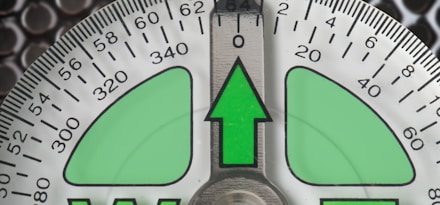
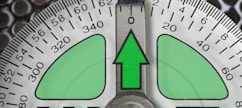




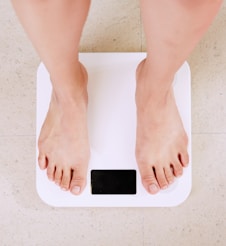

How Much Protein Per Day for Lean
Protein, the elemental building block of muscles, is the silent architect behind the pursuit of a finely chiseled physique. Yet, amidst the clamor of fitness advice, the precise quantity of this nutrient remains elusive. So, what's the secret formula for your daily protein intake to sculpt that lean, toned body? In our quest for answers, we'll embark on a journey through scientific insights and numerical revelations to unravel the enigma of protein in the realm of fitness and nutrition.
Recommended Protein Intake by Institute of Medicine:
Adults:
10% to 35% of daily caloric intake.
Example for a 2,000-calorie diet: 50 to 175 grams of protein per day.
Recommended Protein Intake for Lean Body Goals:
Research suggests 1.2 to 2.2 grams of protein per kilogram of body weight (or 0.54 to 1 gram per pound) daily.
Example for a 154-pound (70 kg) individual: 84 to 154 grams of protein per day.
Optimal Protein Distribution:
Consume protein evenly throughout the day.
Prioritize protein-rich foods around workouts for muscle recovery and growth.
Quality Matters:
Lean protein sources include chicken, turkey, fish, tofu, beans, and low-fat dairy.
They provide protein and essential nutrients while being lower in saturated fats and calories.
Individual Variations:
Factors like age, metabolism, and training intensity can influence protein needs.
Consult a nutritionist or dietitian for guidance.
In summary, the daily protein requirement for a lean body varies. However, a higher intake of 1.2 to 2.2 grams of protein per kilogram of body weight is often recommended for muscle preservation and fat loss. Prioritizing quality sources, distributing intake evenly, and seeking professional advice can optimize your nutrition plan.
Credit to:
Institute of Medicine. (2005). Dietary Reference Intakes for Energy, Carbohydrate, Fiber, Fat, Fatty Acids, Cholesterol, Protein, and Amino Acids.
Phillips, S. M., & Van Loon, L. J. (2011). Dietary protein for athletes: From requirements to optimum adaptation. Journal of Sports Sciences, 29(S1), S29-S38.
Kerksick, C. M., et al. (2017). International society of sports nutrition position stand: Nutrient timing. Journal of the International Society of Sports Nutrition, 14(1), 33.

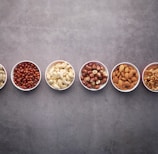
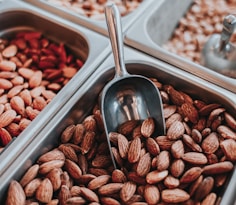
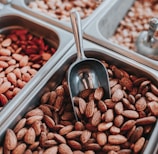


What Body Percentage is Lean
Understanding Body Fat Percentage:
Body fat percentage represents the proportion of total body weight attributed to fat.
Lower body fat percentage correlates with a leaner appearance.
Body Fat Percentage Ranges by Gender:
Men:
Lean Range:
6-24%
Ideal Range for Athletic Look:
10-15%
Women:
Lean Range: 16-30%
Ideal Range for Toned Look: 20-25%
Body Fat Percentage Goals for Athletes and Fitness Enthusiasts:
Male Athletes:
Target Range: 6-13%
Female Athletes:
Target Range: 12-20%
Recommended Body Fat Percentage for General Health and Wellness:
Men:
Recommended: Below 20%
Women:
Recommended: Below 30%
Body Fat Percentage Goals for Aesthetics:
Competitive Bodybuilding (Men):
Target Range: 4-10%
Competitive Fitness Modeling (Women):
Target Range: 10-20%
Individual Variation:
The ideal body fat percentage varies among individuals due to genetics, muscle mass, and body structure.
Some individuals may appear leaner at higher body fat percentages.
Methods for Monitoring Body Fat Percentage:
Skinfold measurements
Bioelectrical impedance scales
Dual-energy X-ray absorptiometry (DXA)
Hydrostatic weighing
Consultation with healthcare professionals or fitness experts for accurate results.
_______________________
Disclaimer -
The author and site authority strive to provide accurate information. However, we do not claim absolute accuracy. We strongly recommend cross-checking all facts and figures. Please consult a qualified medical practitioner or expert before implementing any advice. In case you find any incorrect information herein, let that be notified us. We will strive to update it with the most current and reliable information available. We encourage you to review the ‘Terms and Conditions’ and ‘Privacy Policy’ sections of our website carefully before proceeding. Your well-being and informed decisions are our top priorities.
As we finish our journey, I want to thank you for being here. To learn more, check out ' How Can a Girl Get Muscle: Top 12 Tips that Really Work' and ' How Much Protein Carbs Fat to Build Muscle: Your Ultimate Guide ' on this page. They're like guides to help you succeed in your fitness journey.
Continue Your Learning: Access Our Library of Muscle Gaining Articles-
What is Toned Muscle: Meaning & Your 1st Dive into Fitness
How to Build Your Back Muscles : Your Comprehensive Back Muscle Handbook
Different Types of Pull ups + Benefits of Pull Ups: 2 in 1 Comprehensive Pull up Guide
How to Gain Muscle and Lose Fat Fast- 15 Simple Tips
Benefits of Australian Pull ups
